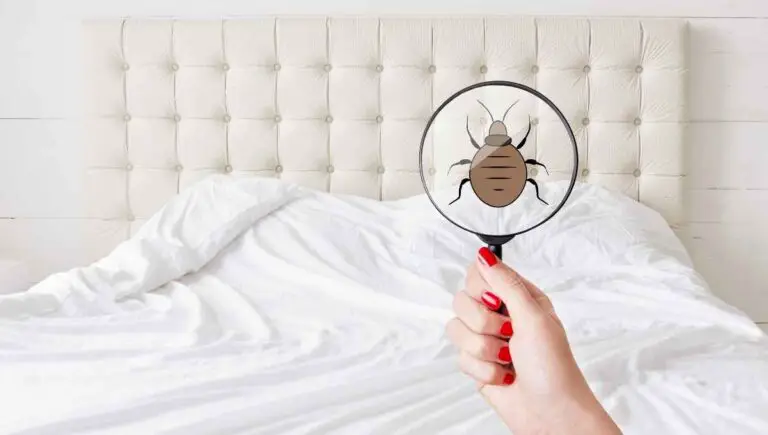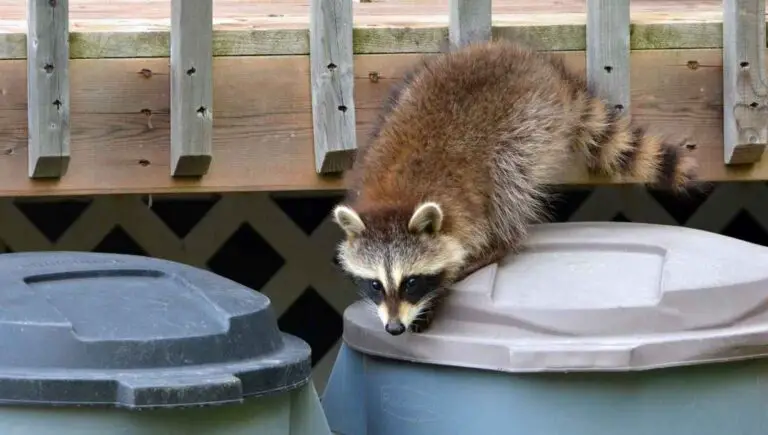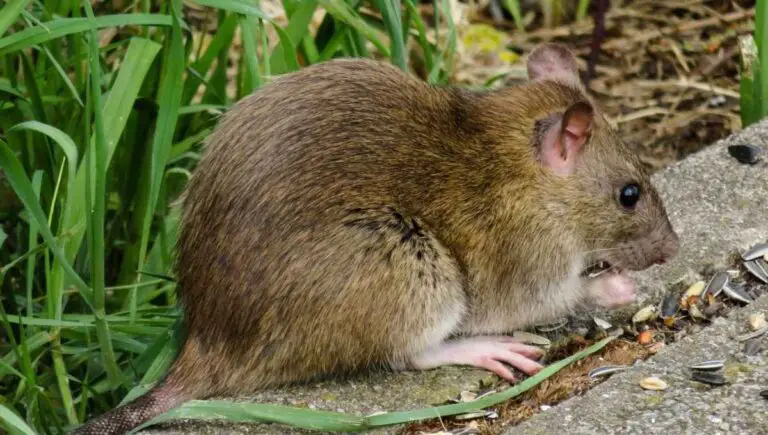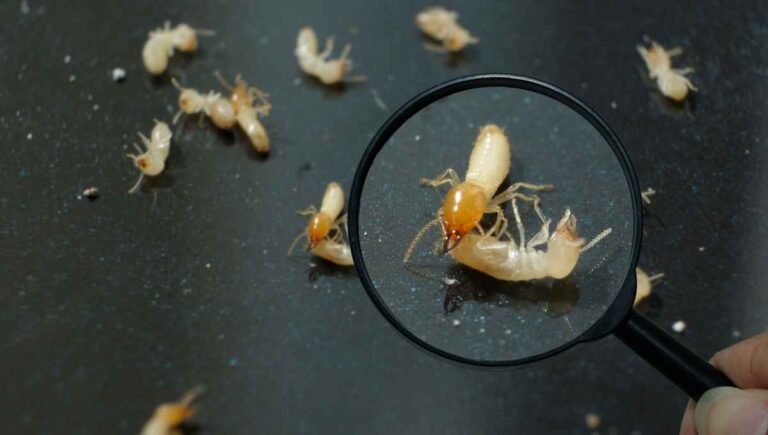How to Get Rid of Mice In Your Backyard
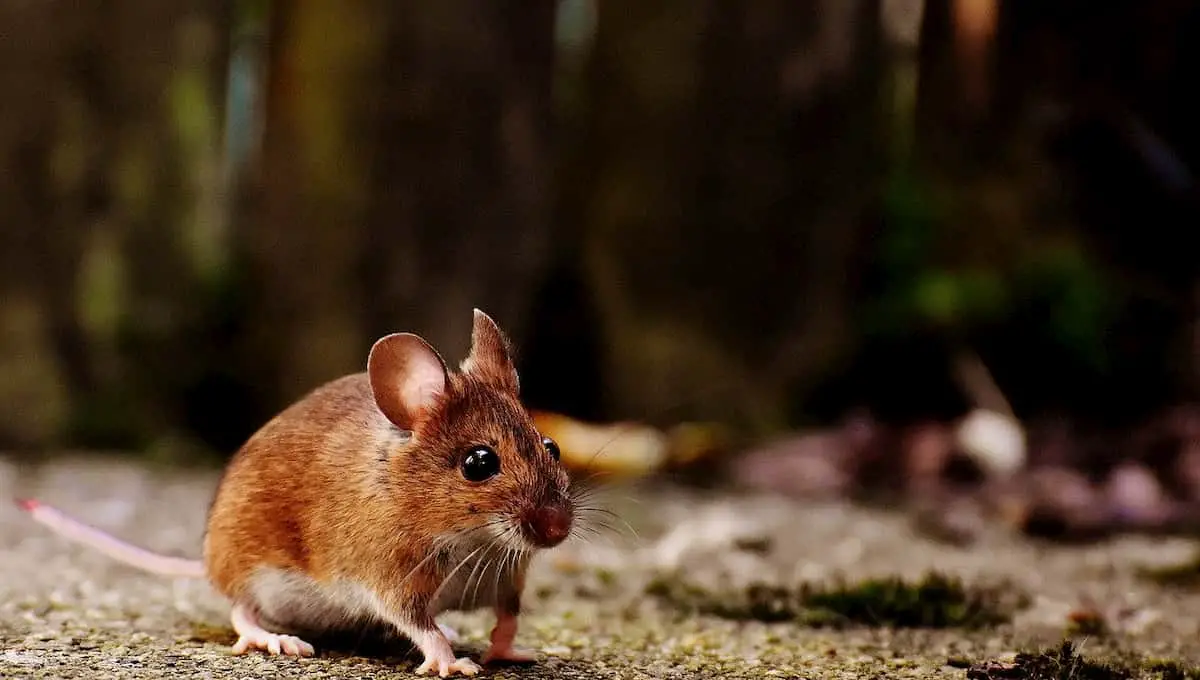
Mice and other rodent species can be a real nuisance for every homeowner. If you have a mice problem in your yard then you’ll understand the urgency in figuring out how to get rid of mice in your backyard.
Controlling the mice population starts outdoors, and you might want to start as soon as possible before these small creatures head indoors.
One of the most common types of pests found in many homes is the field mouse. These rodents are unbelievably impressive when it comes to looking for ways to get into your property and eventually inside your house.
Trust us, you don’t really want mice to get indoors because once they do, they can build their nests inside the walls, up the attic, under your appliances, and even behind cabinets.
What’s more annoying is that these creatures easily reproduce – we’re talking about 5-10 births every year and with each birth, 3-14 mice are born. For this reason, learning how to get rid of field mice in a yard should be your top priority.
Before you start on your mission to clean up the yard and make sure that mice don’t come onto your property, there is a need to understand their behavior.
Understanding things like what attracts mice to your yard, the dangers of having mice in your home, and infestation in general, can help you find the best way to get rid of field mice.
Are You Dealing With Mice Infestation?
You may have seen a mouse running around your house at one point. Maybe you also spotted signs such as gnaw marks on your outdoor or even indoor furniture. Perhaps you’ve found mouse droppings or heard of scratching and squeaking within the walls?
If you’re like most, you’ll then start to wonder if this was just an isolated field mouse wandering through your property or if you’ve got a full-blown infestation problem on your hands.
So how many mice is considered an infestation or even moreso, does one mouse mean an infestation?
If you frequently see mouse droppings everywhere, spot gnaw marks on plastic items, wooden furniture, or even your clothes, then you’re likely dealing with an infestation and it’s important to deal with it right away before the problem gets worse.
Concerns About Having Mice In Your Home
Mice not only destroy furniture and other items in your home by chewing on them, but they can also spread diseases. All species of rodents, whether they’re tamed or wild, are carriers of viruses and bacteria that can cause infections in humans.
Some of the infections transmitted by rodents include hantavirus, leptospirosis, and rat-bite fever. A common house mouse can become infected when it comes in contact with a wild mouse.
While infections can be uncommon, they do have fatal consequences especially among the elderly, pregnant, those with chronic illnesses, and very young children, since these people generally have weaker immune systems.
Other than the spread of diseases, there’s also the concern of sharing your bed with a mouse. What happens late at night when everyone’s asleep and the lights have been turned off? Will mice crawl in bed with you? Will mice bite you in your sleep?
These are all questions you may have asked yourself the moment you suspect you have an infestation problem.
Unfortunately you’ll probably not like the answer to these questions because, yes, a mouse can crawl in bed with you and may bite you while you sleep. I don’t know about you, but just the mere thought of this would make it a struggle to get a peaceful night’s sleep.
Fortunately, getting bitten in your sleep or having a mouse crawl on your body while you sleep is less likely to happen if you don’t often eat in bed or leave crumbs in the bed.
If you often enjoy eating in your bedroom though, there’s a pretty good chance you probably drop crumbs every now and then. At this point you might as well put down a welcome mat inviting any resident mice over for a late night slumber party.
Will Mice Come Out If Lights Are On?
Mice are nocturnal creatures that are most active between dusk and dawn. While mice don’t like bright lights, a lot of people think that keeping the lights on will repel the creatures, but that’s only a myth.
So, will keeping lights on keep mice away then? Mice may not like bright flashy lights but they will have to come out, especially if they are desperate for food. In fact, they can even venture out on a bright day if necessary.
If you’re desperate to have a good night’s sleep and you don’t want to have to worry about a mouse in your bedroom, it’s an excellent idea to have a cat around. Your furry companion should effectively help keep the mouse away from you.
How to Get Rid of Field Mice In Yards
Dealing with a mice problem has to start outside of your home. You don’t want your property to be attractive for them so you need to figure out ways on how to get rid of mice outdoors to stop them from entering your house in the first place. To be completely honest, it won’t be an easy feat.
Rodents are small and can easily squeeze through tiny spaces in your property. It doesn’t even matter if you’ve put up a solid fence – these creatures are smart enough to find entry points.
You might ask, “how do I get rid of mice in my backyard?” The answer – it starts in your garden, as plants and vegetation are excellent hiding spots for mice.
Maintaining your lawn is the first step to getting rid of field mice. You might dread having to trim your lawn every now and then but it’s something necessary to do. Tall grass keeps the mice safe from predators so a neatly-trimmed lawn makes them feel vulnerable.
Are Mice A Problem In the Garden?
Many people think that mice are cute and there’s no harm having them around, but they’ll most likely change their mind once they experience the problems of having an infestation.
Once people start dealing with infestations they’ll start searching things like how to get rid of mice outside their house. Having mice in your garden isn’t uncommon, especially if you have a vegetable garden – an excellent food source for these creatures.
Putting out bait and setting up traps, whether store-bought or a DIY mouse trap, is the most common way of keeping mice out of your yard.
Some people work with poisons, but others agree that using these can hurt not only the mouse but possibly other animals, like housepets, especially if not used carefully. If you don’t want to go this route, there are more humane methods of pest control for your garden.
How to Get Rid of Mice In Your Garden Naturally

If you want to take a gentler approach and don’t want to hurt the creatures, even though they can cause problems on your property (like mice holes in the yard or mouse holes in gardens), there are still ways when figuring out how to get rid of mice in your garden, using natural methods.
Using alternative natural pesticides not only discourages rodents and other pests from turning your garden into their home but you’re also taking care of your health and doing your part in preserving the health of the ecosystem.
Eliminate Food Sources
Mice don’t need much to make themselves comfortable. As long as there is food lying around somewhere and some nesting material, they will claim that area. Eliminating all food sources is the best way to get rid of mice as this addresses the problem at the root.
You can start out by storing grains and pet food in a sealed container. Don’t give them an opportunity to nest by putting away soft material like rugs and fabrics. Cardboard paper and other lightweight items like plastics also make excellent nesting material so make sure you don’t have some lying around.
Getting Rid of Mice Using Scents
You may ask, “how do you repel mice naturally?” Scents have been studied as a potential repellent for mice and other rodent species and many homeowners find them effective. So what scent will keep mice away or what smell do mice hate?
In a study found in the Scientific World Journal, eucalyptus oil was tested as a rodent deterrent. The study concluded that the essential oil is potentially helpful in keeping rodents away. However, if you want this method to be successful, you may need to apply it more frequently – daily or every other day – instead of only applying it weekly. The repellent effect is not so strong when used only once a week because these oils are highly volatile.
Peppermint oil has also been found to be effective against rats and other rodents. To use it, dip rags or cotton balls in peppermint oil and spread around your property, ideally in areas where you’ve spotted a mouse or the entry points.
How to Get Rid of Mice Naturally in Your Garden Shed
The garden shed is one of the most common places in your yard where a mouse would likely nest. It may require much work on your end but it is possible to control their population. If you’re serious about learning how to get rid of mice in garden shed check out the following tips:
- Clear out your garden shed by removing as much storage as possible. Take out boxes, old newspapers, and magazines, as they can easily become materials for nesting. If you spot storage material or other items that are too damaged, it’s time to throw them out.
- Do some cleaning by sweeping up droppings and nest material. Don’t miss sweeping shelves and baseboards.
- With a mixture of 1 1/2 cup of bleach and 1 gallon of water, clean accessible areas in the garden shed. This eliminates scents that mice leave that may attract mice and encourage more infestations.
- Be vigilant about tiny gaps in ceilings, windows, door frames and around plumbing in your garden shed. You have to look carefully and closely as mice don’t need much clearance to get inside.
- Seal gaps using caulking.
- Return the items back into the storage. Replace any damaged storage boxes or containers. More importantly, avoid storing items like old books and magazines or anything that’s made of paper – unless they are hermetically sealed in a container.
How Mice Get Inside Your House
If efforts of preventing mice from entering your home failed outdoors, that means they may have already infiltrated your home. You usually know this once you see signs of infestation mentioned earlier in this article.
Will field mice come into the house? Yes, because the common house mouse isn’t the only species wanting a home, especially in winter. So where do mice hide in a house, how do I find where mice are coming from and how do you attract mice out of hiding? Answering these questions should prepare you in your mission to drive the rodents out of your home.
There are several ways mice can gain entry into your home, especially if you didn’t succeed at keeping them at bay in your yard. Mice make their way indoors through holes and cracks in foundations, walls and floors. Most of the time, homeowners will fail to notice mouse holes until they have spotted other signs of infestation.
Mice can also fit through gaps in ceilings, windows and the sewer lines. These rodents may even enter through bathtub drains or through your sink, especially if drainage pipes were not properly sealed.
They make their way inside for shelter and warmth when temperatures start to drop in fall. This is especially true for a field mouse that wants to use your house as a winter getaway.
Once they’ve established a warm, nesting area, they don’t want to ever get out again. And a population of mice – perhaps a civilization – will grow inside your home as they are prolific breeders.
Favorite Hiding Spots
Remember that these creatures exist to eat and reproduce. So don’t be surprised if you see them anywhere near your kitchen. That’s not to say they won’t nest in other areas in your home as well. Common nesting areas for mice include:
- Inside or beneath bathroom or kitchen cabinets
- Desk drawers and cabinets
- Behind or under kitchen appliances
- Under your furniture
- Inside voids in upholstered furniture
- Stored cardboard boxes – a favorite!
- Cluttered rooms like garages or attics
- Voids in ceilings or walls, especially when near a heat source.
Luring Mice Out of Hiding
Mouse and most rodents are shy but they are inquisitive. Being prey animals, they like to hide, which makes it more challenging for you to get rid of them. But once you’ve figured out where the mice are hiding in your house, it’s time to lure them out – with the use of baits and traps.
Are Household Mice Repellents Effective?
If you haven’t decided to work with an exterminator, it’s natural for you to find ways to deal with the problem using items commonly found in your home. Homeowners have already asked questions like: “Do mice hate vinegar?” Many homeowners have tried cleaning their homes with white vinegar, but does it really work?
Does Irish spring soap repel mice? Some consumers believe that some soap scents help deter rodents, but do they actually do the job? Do mothballs repel mice or do dryer sheets get rid of mice?
Vinegar
Vinegar does nothing to repel mice, so save yourself from pouring vinegar all over your house and enduring that smell.
Soaps
Some consumers report that strong-smelling soaps can help repel mice. But this won’t just be any soap – it has to be an Irish Spring soap. The video above shows that instead of repelling a mouse, the soap seemed enticing enough that the mouse chewed on it.
Mothballs
The straight answer to the question “do mothballs repel mice” is no. Mothballs contain naphthalene, and it’s easy to assume that pests don’t like them. While it’s true – since it works for moths and other small insects – mothballs are ineffective against mice because they contain only a small amount of the active ingredient.
Dryer Sheets
Many homeowners swear that dryer sheets can work against mice but this has not been established scientifically. It was studied, however, that dryer sheets can affect fertility and reproduction of mice. Dryer sheets may help but is not a good long-term solution.
What Foods Kill Mice?
This is a rather ironic question since mice live for food, so how can a food kill a mouse? Food can be used as a bait or mixed with poisons, which will ultimately kill the creature. However, there’s one food that is said to be effective at killing mice, according to homeowners, and it’s instant mashed potato flakes.
How does this work? Instant mashed potato flakes are said to be an effective and non-toxic method of addressing a mouse problem. This has worked for some so why not give it a shot. The idea is to just sprinkle some in areas where you know mice are frequenting.
The idea behind this method is that when the mouse eats up the flakes, it becomes thirsty. Once the flakes inside the stomach get mixed with water, it will swell up, eventually rupturing the rodent’s stomach.
Ultimately, household items used to repel mice may only be effective for a while. But mice and other rodents are smart creatures and they will figure out a way to go around it. For this reason, the most trusted method of getting rid of mice is through baits and traps.
How To Get Rid Of Mice In Your House: Baits vs. Traps
If natural methods outside the yard didn’t work, some homeowners resort to a more aggressive approach on how to catch a mouse and prevent infestation. Traps are usually used inside the house while baits (especially toxic ones) are best reserved for outdoor use.
How Do I Get Rid of Mice Fast with Traps?
Traps are ideally used inside the house but must be used properly and with caution to avoid accidental triggers. You just don’t place traps here and there without thinking about how a mouse can possibly cheat its way around it. Also, be familiar with different types of mouse traps available in the market.
Below are the different types of mouse traps you can use. Each one has its own pros and cons. It’s hard to pick the best mouse trap for your situation since you have to think about the kind of method you want to use – whether humane or inhumane.
Live Traps
Live traps like the YISSVIC Live Animal Trap offer a more humane approach as it catches the mouse without killing it. It is more like a cage or small enclosure with a trigger that sets off, trapping the mouse inside.
This method is used with the intention to release the rodent afterward. If you choose to use this method, the animal should be released 100-200 yards away from your home.
Snap Traps
Many people are all too familiar with this kind of mouse trap. This trap needs bait and the trigger needs to be set. When the mouse goes for the bait and steps on the trigger, the trap springs and kills the mouse instantly. In a way, this is considered a humane method since it doesn’t allow the animal to suffer.
Snap traps like the Jawz Plastic Mouse Trap are also inexpensive and it’s easy to set them up so most homeowners use plenty of them. When using any type of snap trap though, it’s important to be careful, especially when you have pets and children. You don’t want them to accidentally trigger the traps.
Zappers/Electronic Traps
Battery operated electronic shock traps like the P PURNEAT Electronic Rat Trap sends an electric shock to the mice, killing them instantly. When the mouse enters the trap, the trap then sends a shock that knocks the mouse unconscious, which then will ultimately kill it when its heart and lungs stop working.
This is often considered one of the more humane ways of getting rid of mice in your home since the mouse doesn’t suffer.
Glue Traps
Most people are familiar with glue traps like the Catchmaster AA1170 Pest Trap, which is made from an extremely sticky material. Bait is placed in the middle and once the mouse steps on the trap to take the bait, it becomes glued and stuck. Glue traps are considered inhumane since it lets the creature panic and suffer.
Getting Rid of Mice With Baits
Baits can either be non-poison or poison, and choosing which one to use depends on certain factors. For one, non-poison baits should be used along with a trap. These baits include food such as cheese, bacon, cooked meat or any food bits that has a strong odor.
You don’t want to use poison baits inside the house. What usually happens is the mouse takes it and doesn’t die an instant death. Instead, it can still crawl through cracks and tiny holes and die somewhere in your house where you can’t find it. And if you can’t locate the dead mouse, your house will start to smell.
There’s also the problem of bait shyness. This happens when a mouse eats a sublethal dose of the bait and detects it, ultimately avoiding the bait and making your attempt a total fail.
Poison baits are reserved for outside use but still keep in mind the proper way to place them. To be on the safer side, there are mouse bait stations available like the JT Eaton Heavy Duty Tamper Resistant Bait Station.
This device houses poison blocks safely while carrying out its purpose of luring the pest inside and killing it. With this method, you can put the device in a safe corner in the room without worrying about kids and pets touching the poison.
Baits vs Traps: What Gets Rid of Mice Fast
When comparing baits and traps, traps are no doubt the fastest way of getting rid of rodents in your home. However, in cases where the infestation has become a serious problem, homeowners will prefer using toxic baits. This method is also useful when the area is continuously reinfested.
What poison kills mice instantly, you may ask? Anticoagulants are popular ingredients in rat poison. They work by blocking blood-clotting factors in the animal, resulting in internal bleeding and ultimately death. While effective, one dose will take one or two weeks to kill the animal.
Others, however, can kill in just 2 days after the animal has taken a lethal dose. Bromethalin is one rodenticide that has been studied to kill rats in just 8-12 hours when given in excess dose. When you decide to use toxic baits, it’s best to work with pest control professionals as they can help you find the best mouse bait for your situation.
How Do Exterminators Get Rid Of Mice?
You can’t help but wonder how exterminators get their job done. Most home exterminators use varying techniques to get rid of pests. They can use traps, baits and even a mix of both.
You can’t deny how effective a snap trap is but they can be dangerous to humans especially if not set up in proper areas. Similarly, glue traps need to be strategically placed for it to be effective.
The same can also be said for the different mouse traps and baits mentioned earlier. Strategic placing is important for all the methods to work. In case you lack the knowledge and confidence to deal with mice infestation, it’s best to leave it to professionals.
How Do You Know If Mice Are Gone?
Do mice leave on their own? No, they don’t and that means you need to do something about it. Whether you took matters into your own hands or you had help from professionals, it would be good to know if the mice population has been successfully controlled.
Below are clues to look out for and some tips to help you know that your mice problem has been solved.
- No more scratching or squeaking sounds
- Absence of nests – especially in areas you know have been turned into a mouse’s nest.
- Check items that have been gnawed during the infestation. Lack of freshly chewed items indicates the mice have gone.
- Mice stink so if there’s no smell, you’ve likely taken care of them
- Check for droppings especially in areas where you usually found them during infestation
- Leave more traps to help with confirmation
- Use flour or unscented talc on the floor to check for tiny footprints
Do all these tips for a week to see if the mice have all gone. If you don’t observe any presence for a week, then congratulations! Your mice control efforts paid off. Now all you need is to make sure you don’t make your home conducive for nesting.
Summary:
Preventing mice infestation can be done with or without help from professionals. If you just started noticing the presence of a mouse, you need to act quickly. It’s better to prevent an infestation from happening in the first place.
Here is a recap of all the things you need to remember when dealing with mice problems in your yard and inside your home:
- Maintain a clean yard. Tall grass, compost, and a pile of fallen leaves make perfect hiding spots for mice. Mow your lawn regularly and if you have to compost, do it as far away from your home as possible.
- Remove food sources from your yard. These include bird food or unfinished pet kibbles lying around. More importantly, keep trash cans sealed with locks.
- If it comes to using traps, use them with baits. Place these baited traps in areas on your property where you spotted mice. Also, keep baited traps away from pets and children, who may accidentally trigger them.
- Cover any mice holes or burrows in your yard that may be used as nesting grounds.
- Once you’re done prepping your yard, it’s time to make sure that the mice won’t get indoors.
- Inspect cracks and holes on your house’s exterior and make sure you address them as soon as possible.
- Some household items are reported to be good at repelling mice but they shouldn’t be your only solution.
- If it comes to worse, working with professional exterminators is the best solution.

